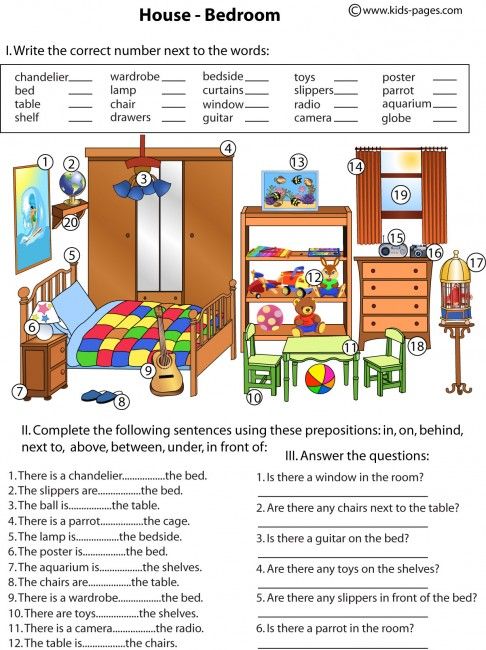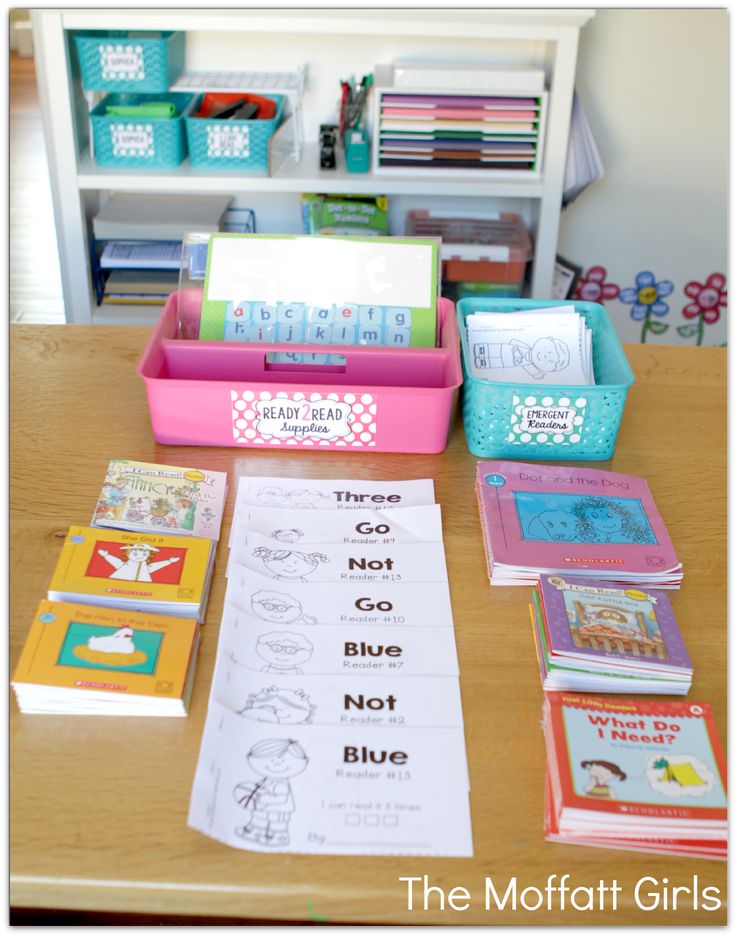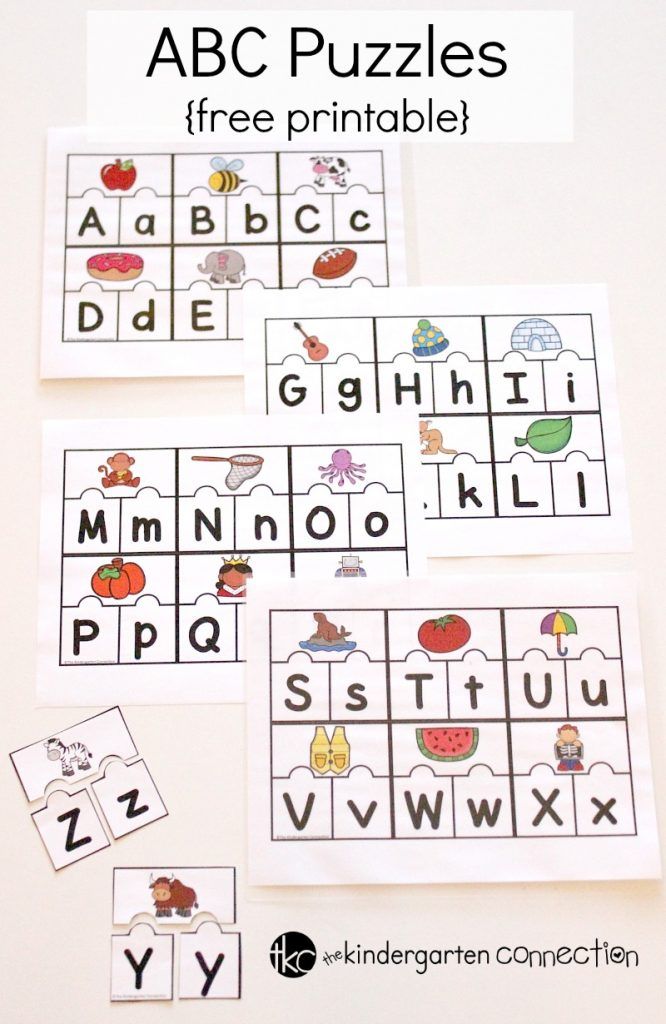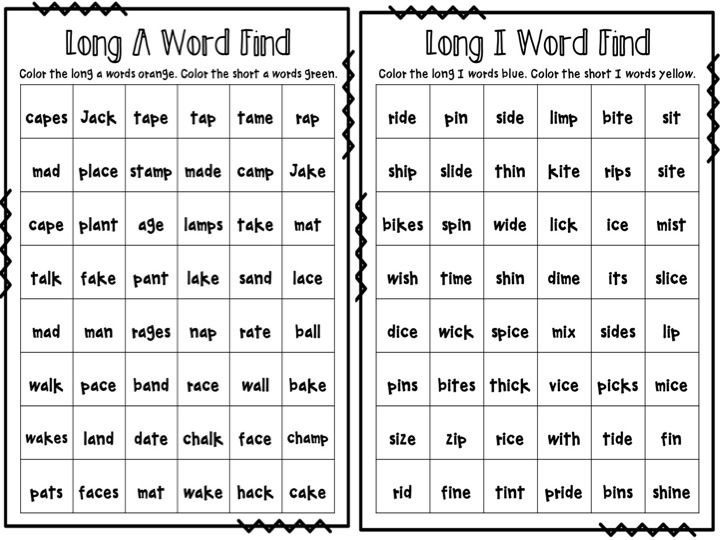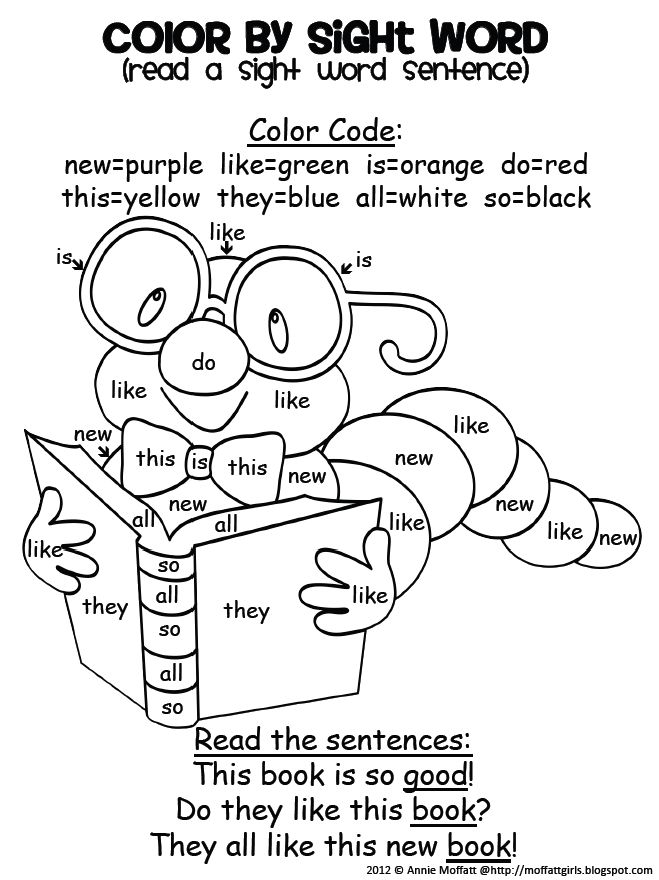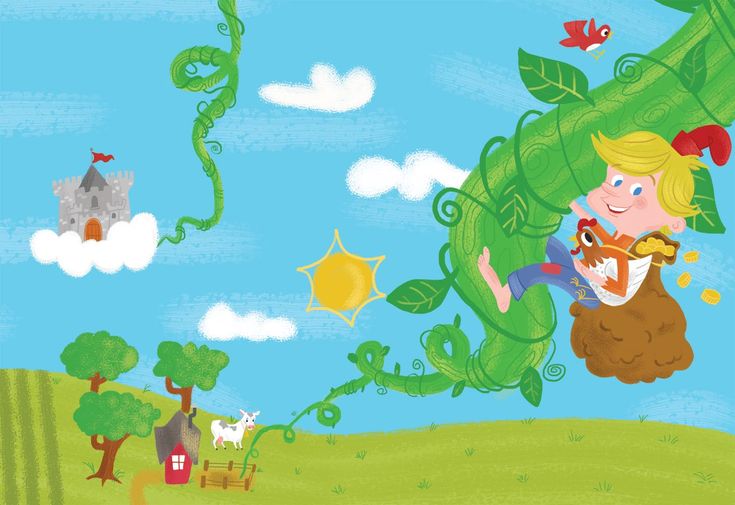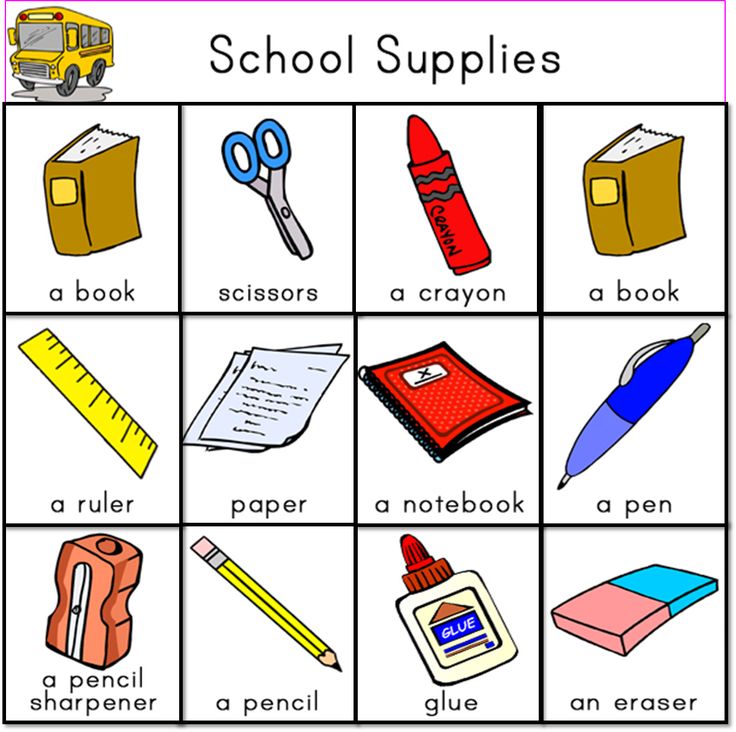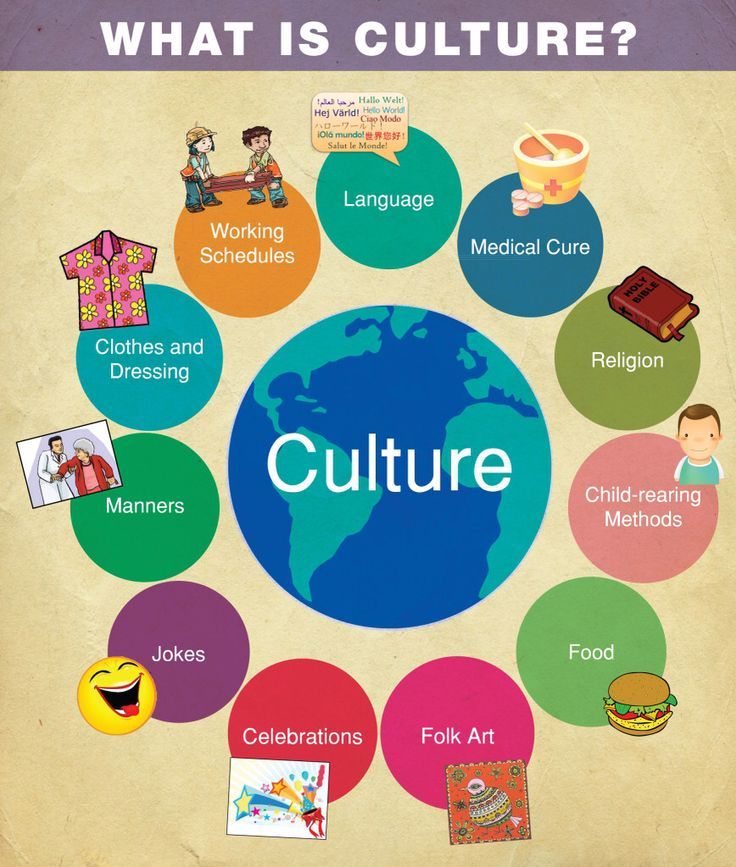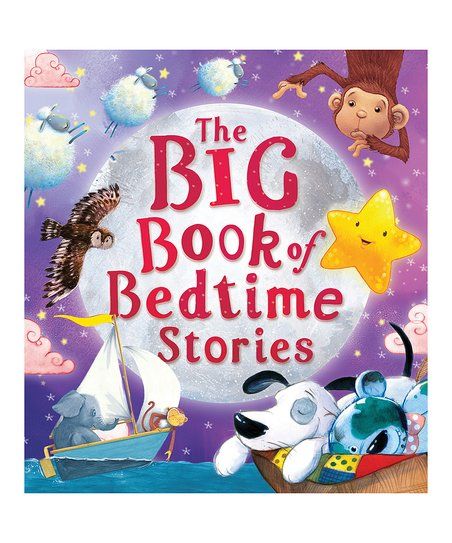Examples of prepositions for kids
Prepositions for Kids
by Craig Shrives
This Page Includes...
- Video
- Printable & Sendable Test
What Are Prepositions? (for Kids)
Prepositions are linking words. There are over 100 different prepositions. Here are three common ones:
- in
- on
- at
Let's Use Some Prepositions!
Let's start this lesson by using some prepositions. Select the best preposition to fill the gap.
Notice that these prepositions tell us where things are.
- The mouse is under the chair.
- My apple is on the plate.
- He is behind bars.
As well as telling us where things are, prepositions can also tell us when things are. Let's do some examples.
Select the best preposition to fill the gap.
- Meet me in the morning.
- Clean your room before dinner.
- The train will leave at 4 o'clock.
- Anna was in Germany in October. ("In" is a preposition. The first "in" tell us where. The second "in" tells us when.)
Prepositions Are Linking Words
The word "preposition" means "placed before."
A preposition is placed before a word to show the relationship with a nearby word. So, a preposition links one word to another.
Click on a Preposition
The mouse is above the box.
The preposition "above" is placed before "the box" to show the relationship between "the box" and "the mouse."
Examples of Prepositions
Prepositions are extremely common because we need them to show how words relate to each other.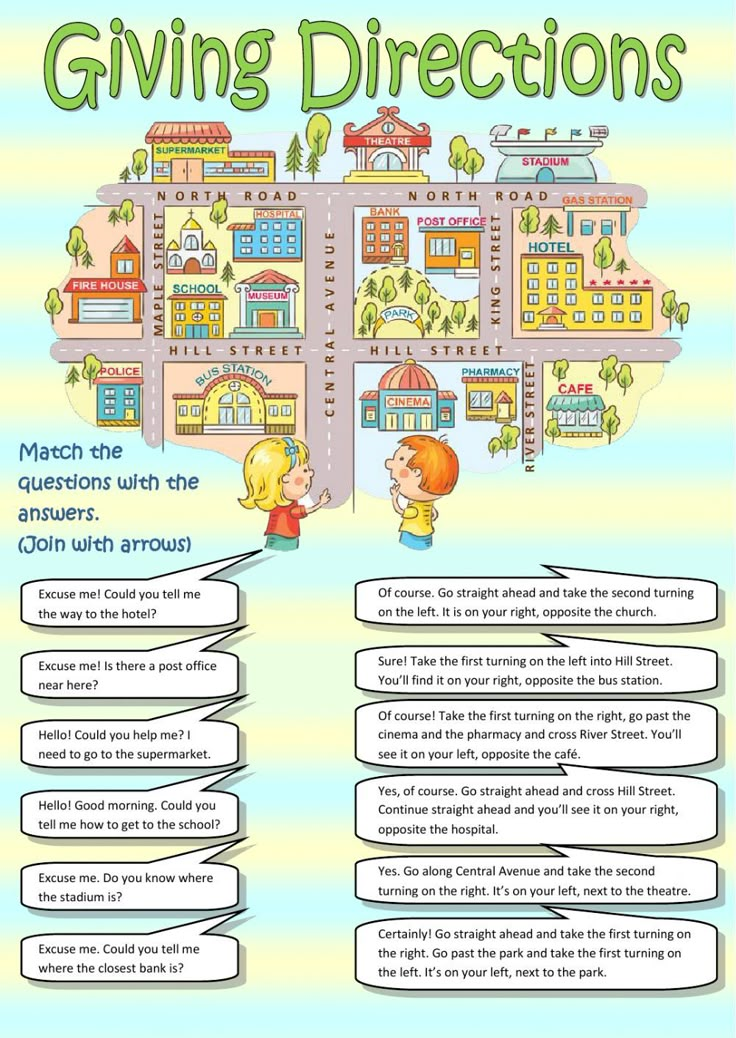 For example:
For example:
- John is near the cow. (Here, the preposition "near" tells us the relationship between "the cow" and "John.")
- I saw your key by the lamp. (Here, the preposition "by" tells us the relationship between "the lamp" and "your key.")
Here are 30 common prepositions:
- about, above, after, against, as, at, before, behind, below, beside, between, by, down, during, except, for, from, in, inside, into, of, off, on, over, through, to, under, until, up, with
Here is a list of 130 prepositions.
More about Prepositions
Here is the most important point about prepositions:
- A preposition shows the relationship between the word it is positioned before and another nearby word.
As you learn more about prepositions, you will soon notice that not all prepositions tell us where or when things are.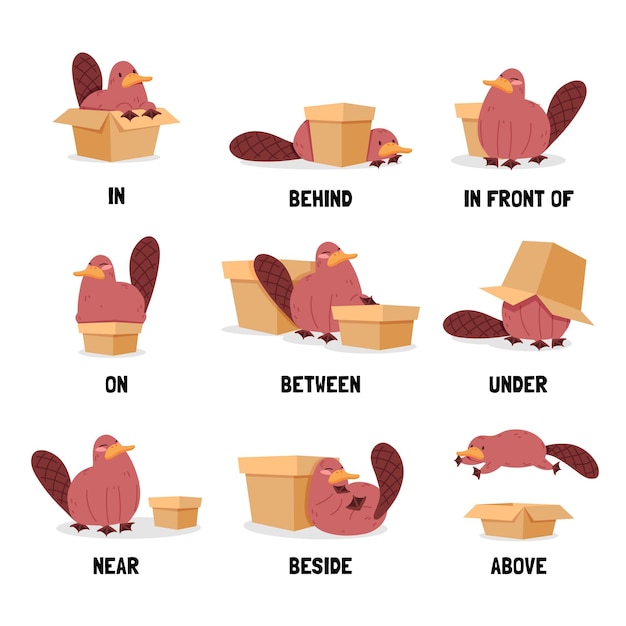 Prepositions can tell us other things too, like ownership and how. For example:
Prepositions can tell us other things too, like ownership and how. For example:
- We found the fingerprints of the robber. (Here, the preposition "of" tells us about possession. It is positioned before "the robber" to show the relationship to "the fingerprints.")
- Tina sang with passion. (In this example, the preposition "with" tells us how. It is positioned before "passion" to show the relationship to "sang.")
Video Lesson
Here is a video lesson on prepositions:
Printable Test
Help Us Improve Grammar Monster
- Do you disagree with something on this page?
- Did you spot a typo?
Find Us Quicker!
- When using a search engine (e.g., Google, Bing), you will find Grammar Monster quicker if you add #gm to your search term.

See Also
Adjectives for kidsAdverbs for kidsConjunctions for kidsNouns for kidsPronouns for kidsInterjections for kidsVerbs for kidsprepositions for adult learnersprepositions of time (at, on, in)prepositions of place (at, on, in)
Page URL
Next lesson >
Download Grammarly's free browser extension. It helps with:
Avoiding spelling errors
Correcting grammar errors
Finding better words
The extension works with webmail, social media, texting apps, online forms, and Microsoft Office apps (e.g., Word, Teams).
Buy the Grammar Monster book.
Suitable for: Teachers, advanced students, and business writers.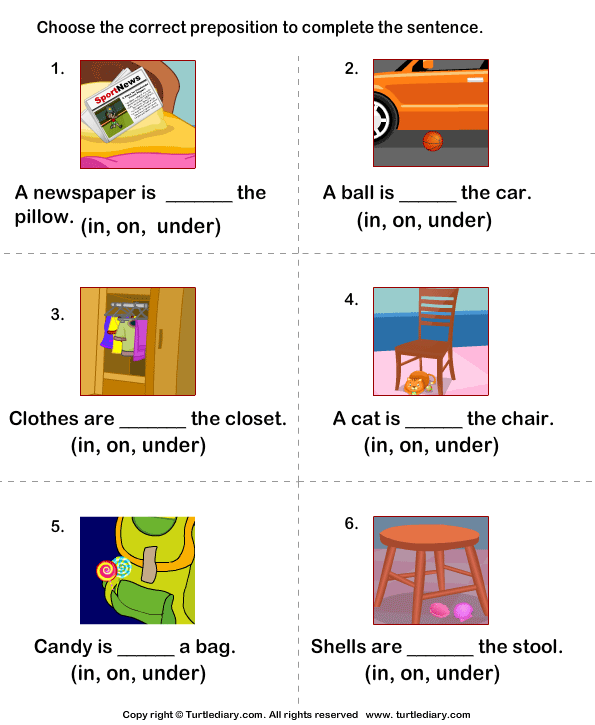
Description: Written by the founder of the Grammar-Monster.com, "Smashing Grammar" is divided into three sections:
- A-Z of Punctuation
- A-Z of Grammar Essentials
- A-Z of Easily Confused Words
more...
Join in via:
Twitter (@grammarmonster)
YouTube (@Grammar-Monster)
Our weekly newsletter
Here are some tests and games for learning about prepositions:
- Find-the-preposition test
- Drag-and-drop game for prepositions
- Prepositions game (bubble-pop game)
- Prepositions game (whack-a-word)
- Prepositions game (fish game)
Next lesson >
A Helpful Guide, Plus Fun Activities
If you’re like most parents, then you’re probably very busy with an endless to-do list.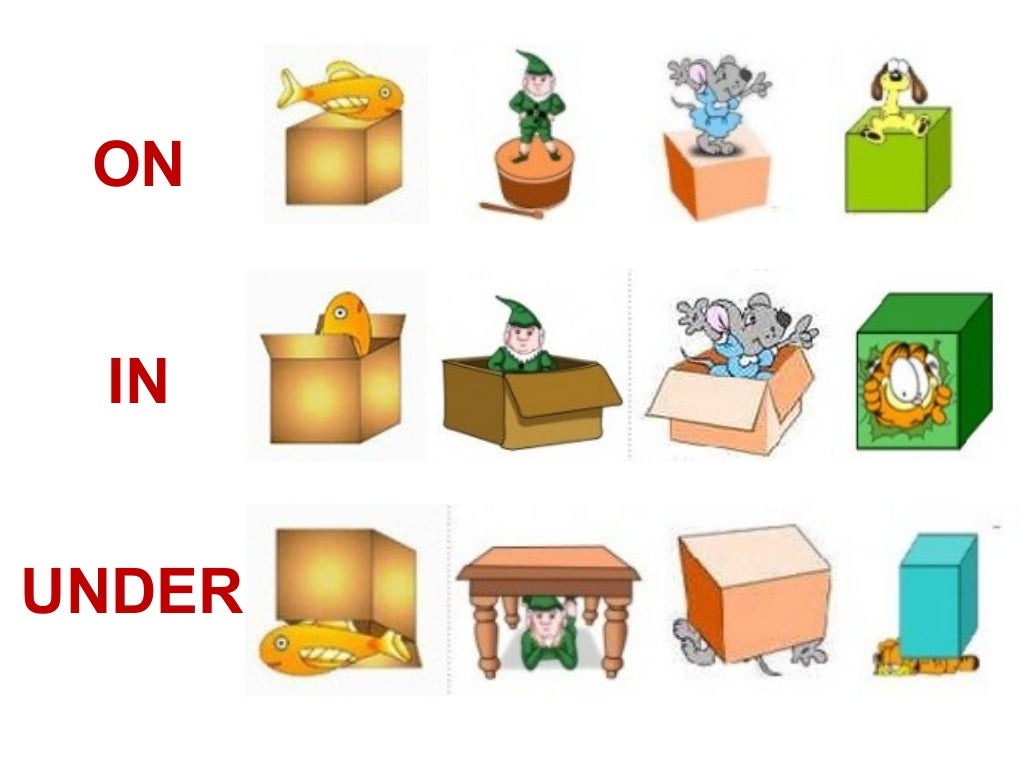 This can make it challenging to help your child with prepositions for kids.
This can make it challenging to help your child with prepositions for kids.
Before you start worrying about your child’s language and vocabulary development, fear not! We are here to help.
Our HOMER experts know a thing or two about helping children understand the parts of speech, and today, we’ll be focusing on prepositions. To be specific, we’ve compiled a detailed guide for you.
Without further ado, let’s get started.
What Are Prepositions?
Prepositions as the linking words in a sentence that help express relationships between other words in that sentence.
Under and inside are prepositions we commonly use in the English language to describe where something is. Besides indicating position, prepositions also help describe when something is happening (before and after, for instance).
In a sentence, prepositions are meant to be followed by a noun, pronoun, or noun phrase (e.g., the door, an apple, etc.) that acts as an object.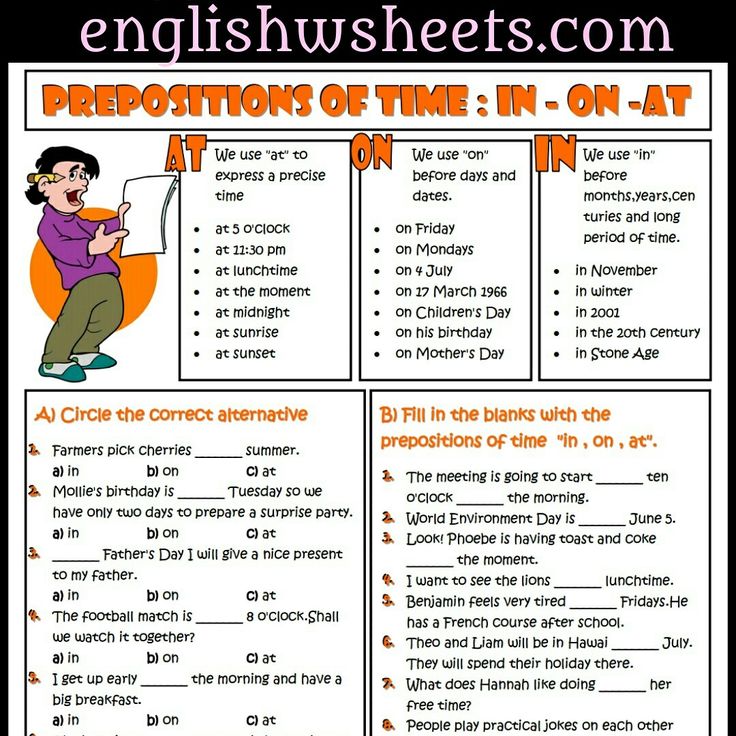 For instance: “Put the apple on… ” is not a full idea because the preposition “on” needs an object after it (“Put the apple on the table.”).
For instance: “Put the apple on… ” is not a full idea because the preposition “on” needs an object after it (“Put the apple on the table.”).
We’ve mentioned that most prepositions express time and location. So, let’s have a closer look at that.
Prepositions For Time
Some of the most common prepositions for time are at, on, by, and after.
For example:
- Our class will start at 4 pm.
- We are going to the park on Friday.
- I’ll be home by midday.
- We’ll drive home after the game.
Prepositions For Location
A few prepositions you might regularly use to indicate location are under, on, in, and above.
For example:
- Place your book under the table.
- The dog is sitting on a chair.
- Your crayons are in your bag.
- The plane flies above the clouds.
Sometimes, it can be challenging for children to grasp the concept of prepositions entirely, but with practice and some of the below tips, your child will soon get there!
Before you can incorporate our tips for helping your child with prepositions for kids, they must be at the right age to start learning this concept.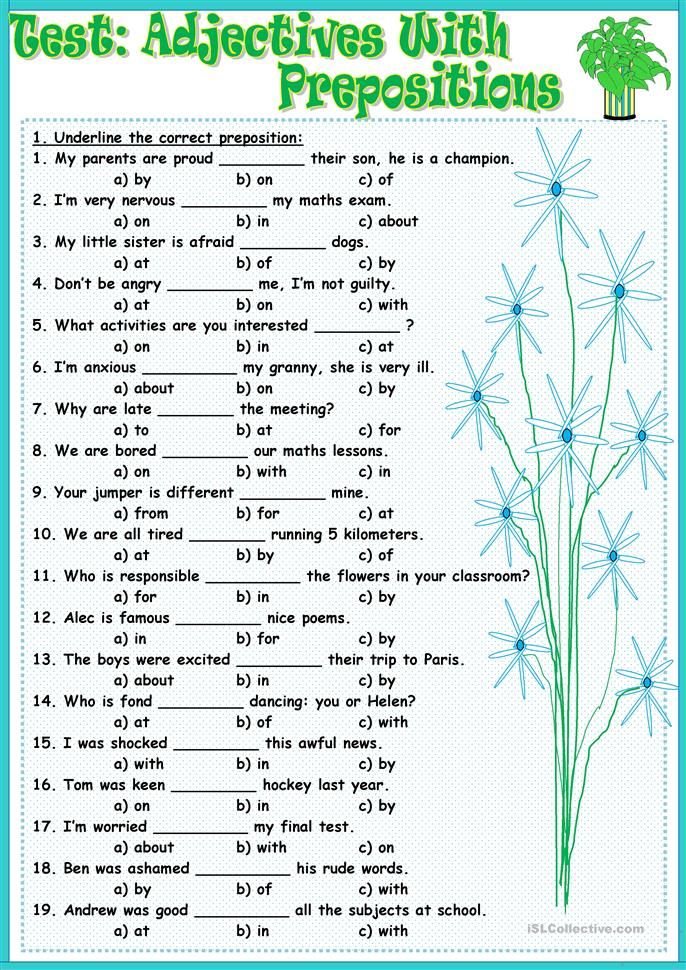
When Do Children Learn About Prepositions?
Babies pick up a lot of their language from their parents, siblings, and caretakers. By 24 months, toddlers commonly use the prepositions “on” and “in.”
In early grades, prepositions are formally introduced. Typically, this would be after third or fourth grade. This is because, unlike verbs or nouns, prepositions are not as easy to understand.
From one of the examples above, we described how “on” can have different meanings. There are also the prepositions “to,” “for,” and “of,” which have various functions in sentences. All of this can be challenging for our young learners.
During toddlerhood and early childhood, teaching prepositions for kids is about exposure more than anything. One of the best ways to help children understand prepositions is by encouraging them to carry out instructions that have prepositions in them.
For example, you might say, “Please put this book on the table.” Simple instructions like this are often effective in helping familiarize children with prepositions.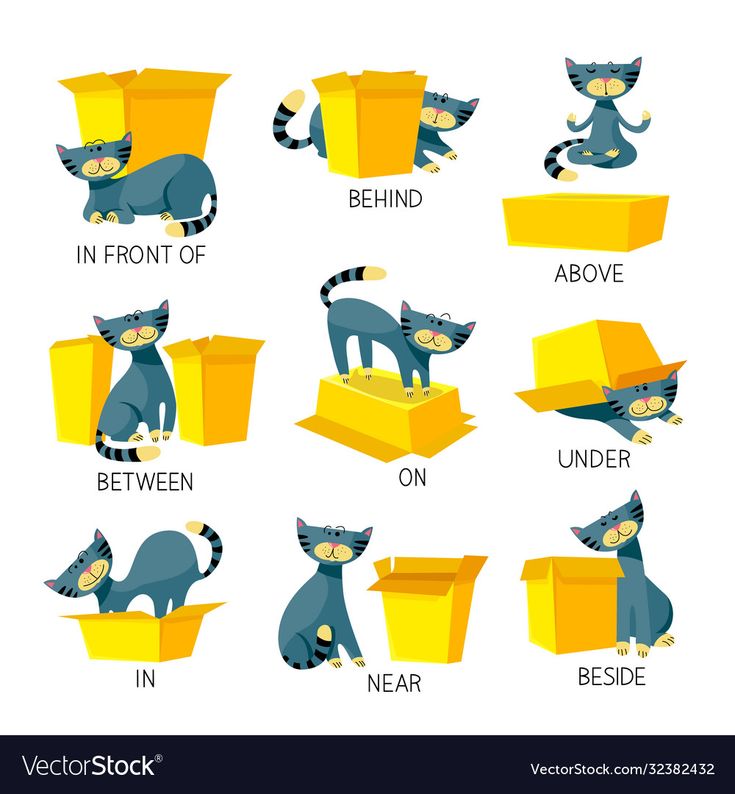
Importance Of Prepositions For Kids
Why are prepositions so important for kids to understand? Why put so much time and effort into helping your child grasp these simple words? Let’s take a look.
Better Communication
One of the biggest benefits of helping your kid know prepositions is that it will help them communicate better.
As already explained, prepositions can be tricky to understand. While these words may be few and pretty short, using them correctly can make a big difference in communication.
Helping your child with prepositions from a young age can enable them to grasp the concept early, practice them often, and know how to use them correctly as they begin constructing sentences.
Improved Ability To Follow Directions
When your child understands prepositions, it will be easier for them to carry out instructions independently. For example, “Please place your crayons in the box” will not be mistaken for “Please place your crayons behind the box.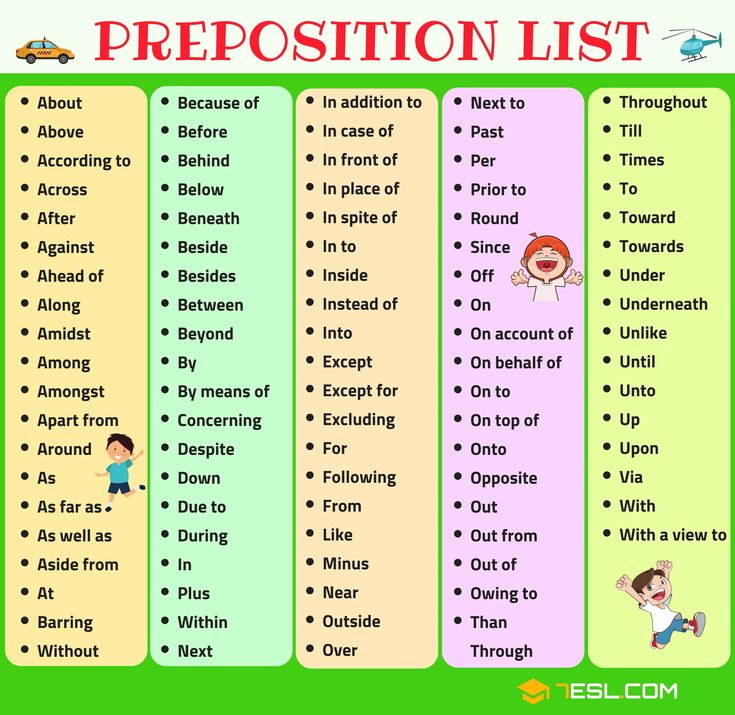 ”
”
Whether it’s in, on, behind, against, or beneath, your child will be clear on what they need to do and confidently do so.
How To Teach Prepositions For Kids
1) Read About It
Sometimes the best place to start with teaching children prepositions (or anything else) is through books. If your child is like most kids, then they already love listening to you read stories to them, so this is an easy one!
There are tons of books online that you can read to help introduce your child to prepositions and how they work. The following are a few great books for kids aged 2-6 years old:
- Where’s Spot?
- Rosie’s Walk
- Up, Down, and Around
- The Berenstain Bears Inside Outside Upside Down
- Hide-and-Seek: A First Book of Position Words
2) Choose The Missing Word
Once your child has a basic understanding of prepositions, it’s time to test their knowledge (but in a fun and easy way!).
Start by writing a simple sentence and leaving out the preposition.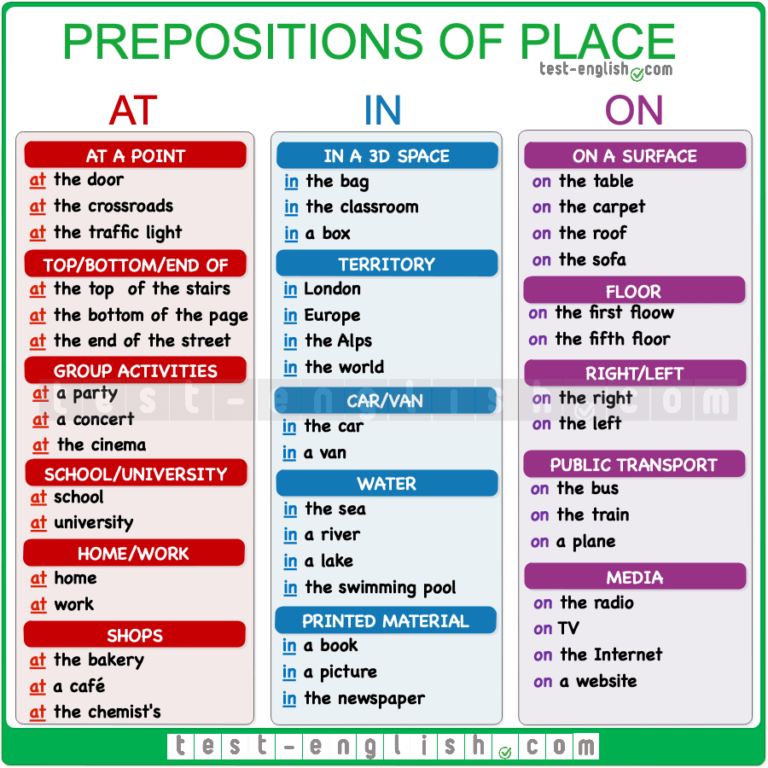 Read the sentence to them and give them a few options to see which word works best in the blank spot.
Read the sentence to them and give them a few options to see which word works best in the blank spot.
For example, you can write down, “I have dance lessons _ Tuesday,” and then give your child three possible options (in, on, under).
It can be great practice to help your child consider each option before deciding on one. Ask them, “Can I have dance lessons in Tuesday?” or “Can I have dance lessons under Tuesday?”
This questioning and taking the time to think about every option can help your child understand why “on” is the correct answer. It can also make the game silly and fun (“We can’t sit under the floor!”)
3) Fix The Strange Sentence
This fun activity works similarly to the previous one, except this time, you’ll write and read a sentence with an incorrect preposition, and then ask them to fix it.
Using the example above (“I have dance lessons in Tuesday”), what sounds funny about this sentence? In this example, your child will need to recognize that “in” is the problem and suggest what word should be used instead.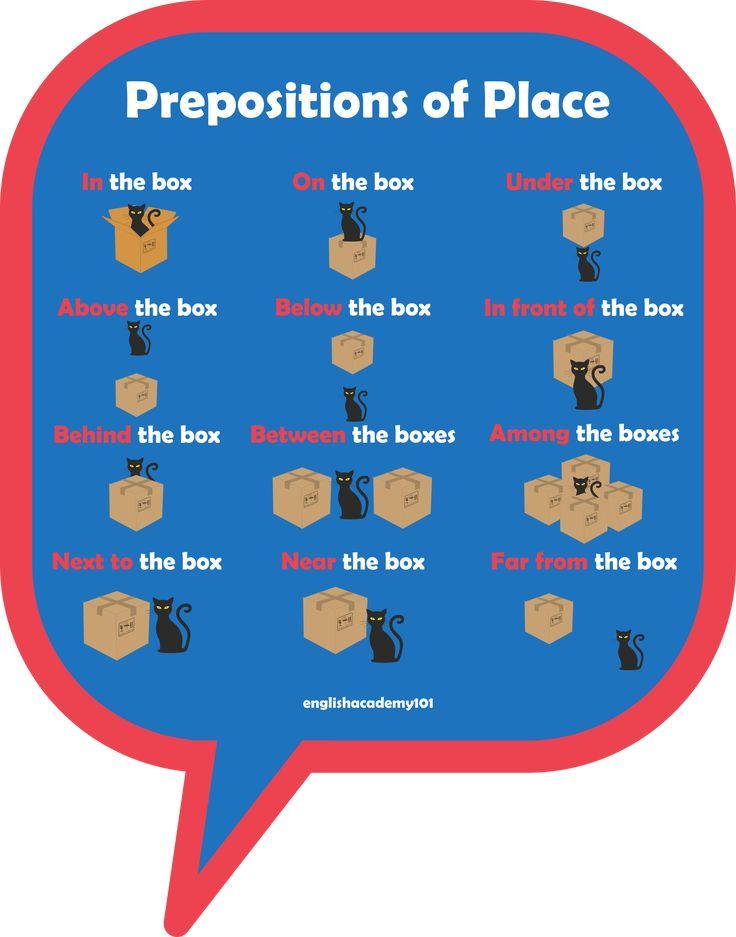
4) Expand A Sentence
Earlier, we mentioned that prepositions are the linking words that express position, time, and other functions in sentences.
A great way to help your child understand this is by helping them use prepositions with simple sentences.
To get started, you can say an incomplete sentence, and then encourage your child to complete it. For example, you can begin with, “There is some juice…” Your child will then complete this with “…in the fridge.”
If they are still new to prepositions, kids will probably make a few mistakes. That’s OK! This is the perfect opportunity to help them learn and grow their vocabulary!
5) Musical Chairs With A Twist
Everyone enjoys playing musical chairs, so we thought it would be a great way to help kids learn about prepositions — with a bit of a twist, of course! All you need for this activity is some fun music, a chair, and an energetic child.
To begin, play the music and allow your child to walk clockwise around the chair (just like the traditional musical chairs).
The major difference is when you stop the music suddenly, your child will need to act out what you say. For example, sit behind the chair, under it, beside it, etc. You can even add to the fun with other instructions, like tapping on the chair or waving to the chair.
6) Sing-Along
You’ve probably heard your child singing along to their favorite songs before (they might even request them on the drive home).
If your child loves singing, why not use this to help them understand prepositions? All you need is a catchy tune (think of a song your child will already be familiar with, like “Row, Row, Row Your Boat”) and some instructions to go along with the song.
With a silly song, simple sentences, like, “Sit on the couch,” “Sit behind the couch,” etc., become much more fun and exciting for your child to engage with while learning.
7) Place The Toy…
Sometimes the best way to help your child understand prepositions is by physically placing a toy in different places.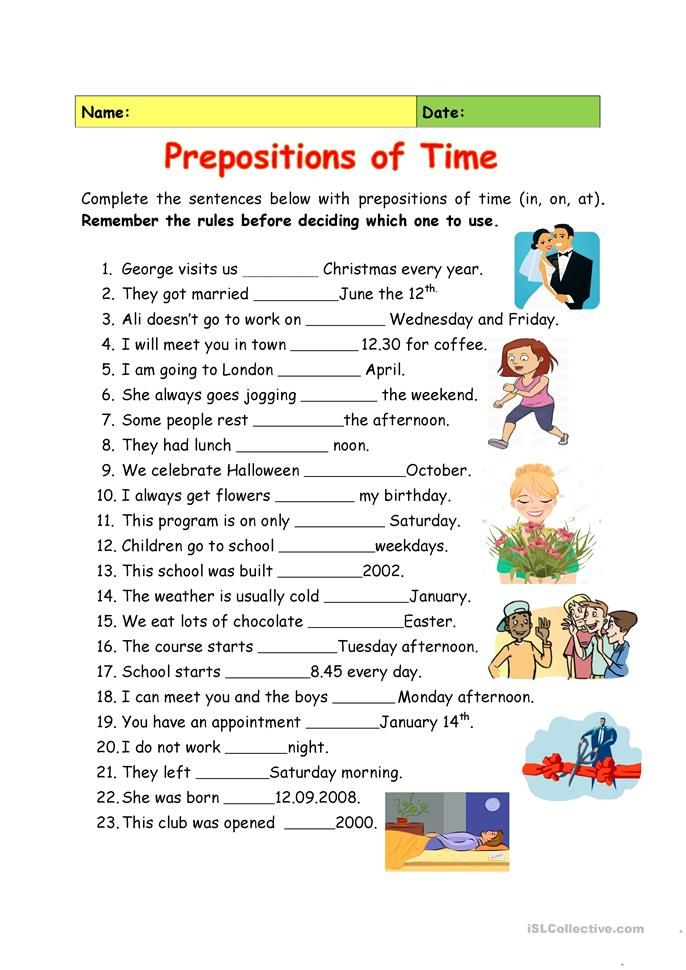
To help your child get excited about this activity, use their favorite teddy bear or toy and then give them instructions on where to place it. For example, you might say, “Place your toy on/under/behind the bed.”
We love this game because it focuses on the movement of one object and may make it easier for children to grasp what the words on, under, and behind actually mean.
Even better, you can turn this into a fun game by seeing how quickly your child can move their toy around to different spots in the house!
Fun With Prepositions For Kids
From our list above, we hope you’re clear on one thing: There are many ways to introduce prepositions for kids while making sure that they see them in a fun and engaging way.
Whether you choose to use some or all of the above-mentioned tips, remember to exercise patience with your child as they try to wrap their heads around prepositions and the rules that come with them.
With plenty of exposure during your daily life, you’ll soon find your child mastering these often complicated concepts.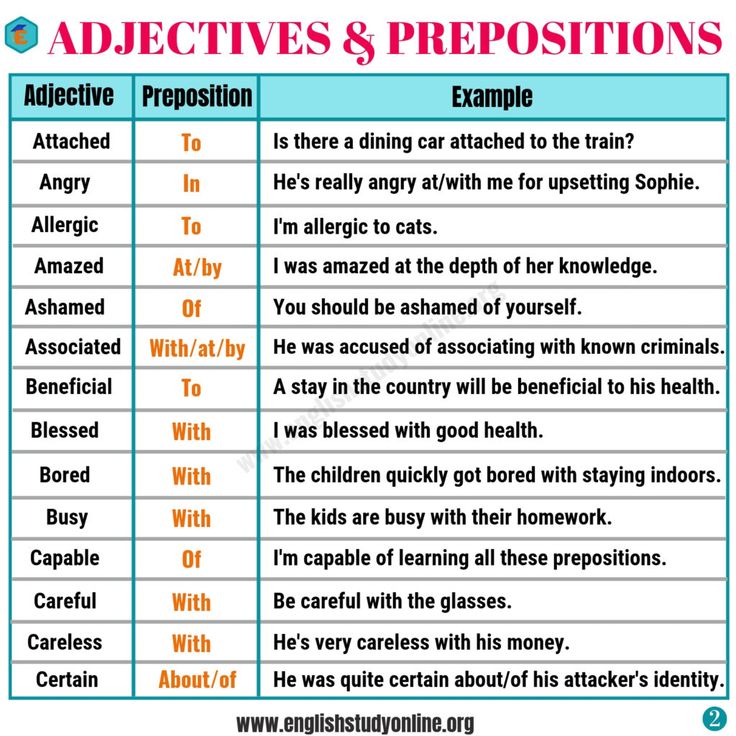
Check out HOMER’s Learn & Grow app for more on how to help children thrive through their early years!
Author
Prepositions: IN, ON, UNDER, FOR
OBJECTIVES:
- clarify the spatial relationships expressed by prepositions IN, ON, UNDER, FOR;
- to exercise children in the correct use of prepositions; to teach to highlight these prepositions in the text and make a variety of sentences with a given preposition (in the picture, according to two key words), analyze sentences, exercise children in laying out a sentence scheme with prepositions.
Improve general and fine motor skills, promote the development of clear coordinated actions in conjunction with speech, develop speech breathing. nine0005
Strengthen the skill of correct pronunciation of sounds in sentences and short poetic texts.
Develop attention, memory, activate the mental activity of children, develop visual-effective and logical thinking.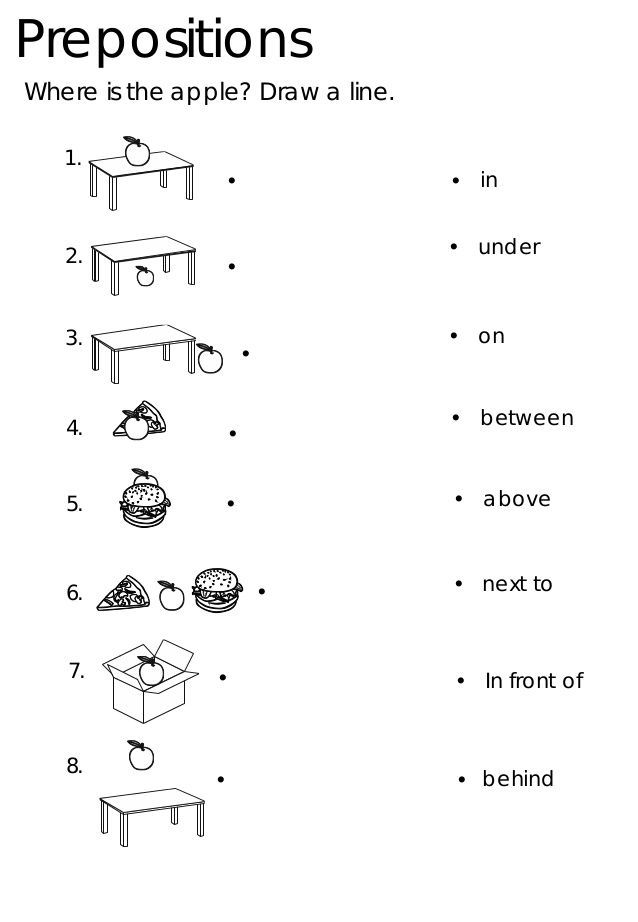
PROGRESS OF THE LESSON
1. Organizational moment
Speech therapist addresses children:
You need to get up more freely
And breathe more calmly.
The speech therapist asks the children to name the “little words” that are shown on the diagrams on the board. nine0005
2. Reporting the goal of the lesson . (Game motivation)
Speech therapist: “Today we will go to the country where small words live. Let's listen to the sound letter that the Fairy gives us."
Fairy Letter Game . Children listen to the letter: “Hello guys! Fairy is writing to you. I want to talk about my city. ( Under ) Our city has beautiful houses. ( For ) fashionable residents walk the streets. ( Pod ) beautiful flowers grow in flowerbeds. People drive ( for ) new cars. ( Na) A narrow river flows through the city.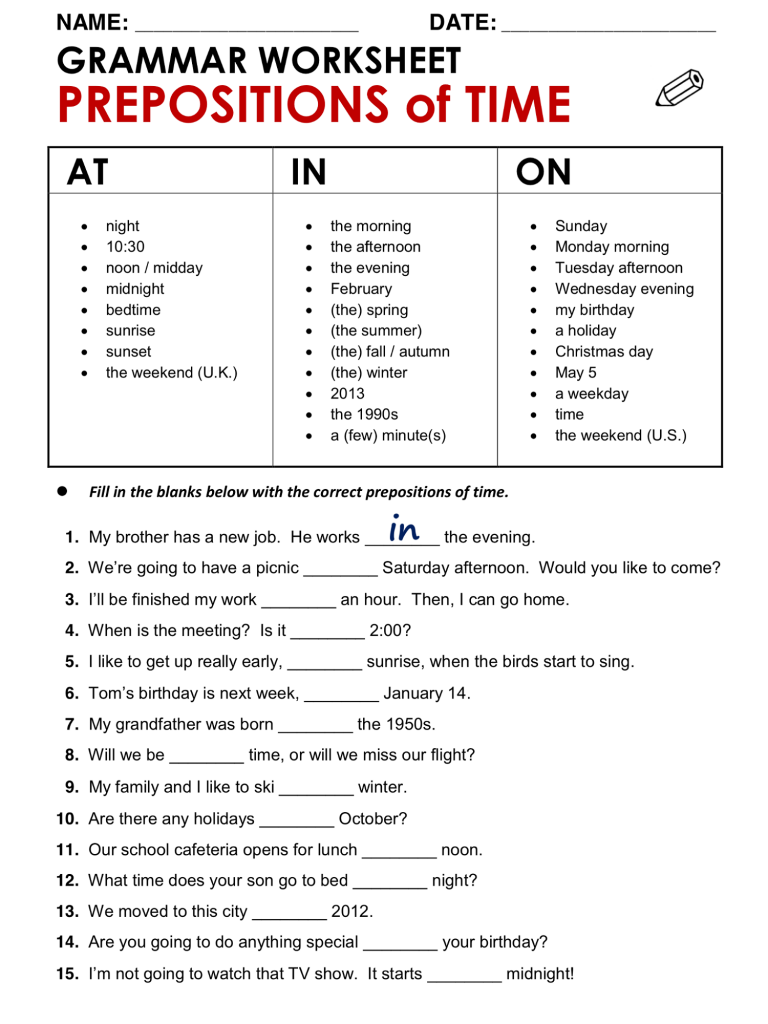 ( Under ) The river is full of tasty fish. Our city is the best!”
( Under ) The river is full of tasty fish. Our city is the best!”
The speech therapist draws the children's attention to the mistakes made - incorrect use of prepositions. Reading again (one at a time) the sentences from the letter, the speech therapist asks the children to correct the Fairy's mistakes.
3. Clarification of the spatial meaning of prepositions: in, on, behind, under
Speech therapist exposes schemes of prepositions in, on, behind, under and, together with the children, specifies when we say these “little words”:
“Little word” (preposition) Appears in when the object is inside ;
ON - when the object is on top ;
UNDER - when the object is at the bottom ;
FOR - when the object is behind.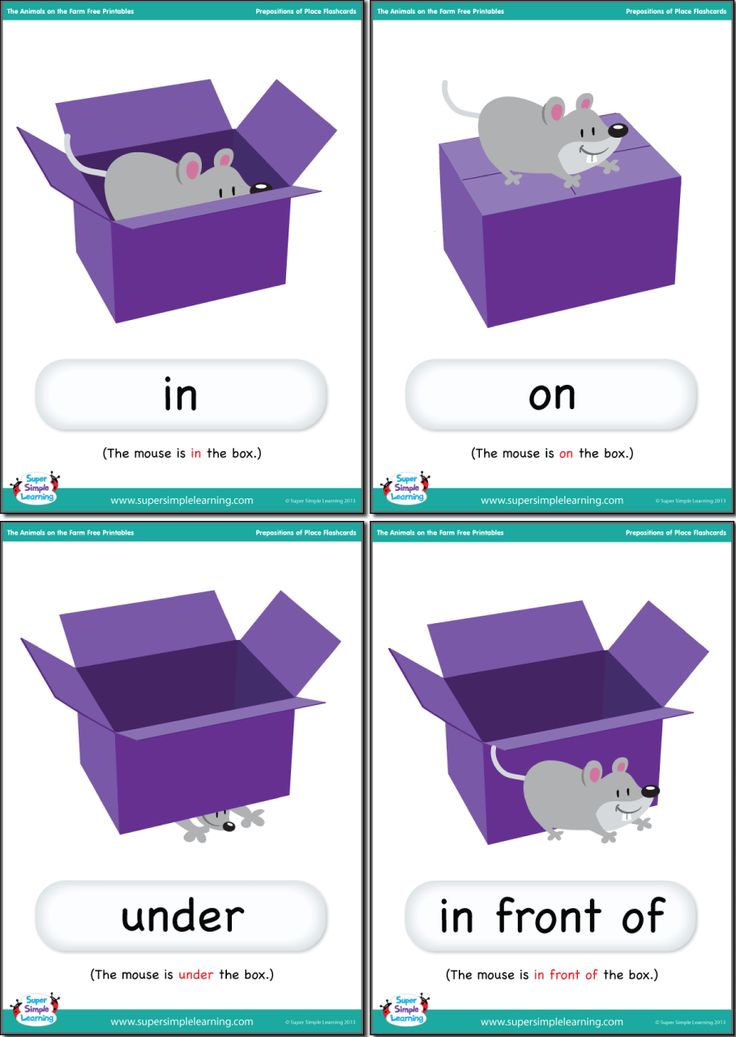
Speech therapist encourages children to name "small words" more precisely - prepositions and recall the poem "About prepositions".
In the field, in the house, on the pine tree,
Beyond the river, in the forest, in a dream,
Under the birch and in the den -
Have you noticed the prepositions?
4. Compilation of sentences with prepositions (from the picture)
Speech therapist: “Fairy has a friend - the boy Fedya. (A planar image of the hero is exposed). He has a kitten. The kitten is very smart, playful. Therefore, his name is Shustrik. Friends love to play with the kitten. And Shustrik runs everywhere, climbs on various objects, hides in different places of the room. Fedya loves to draw Shustrik. And today I sent you my drawings. Examine them and tell me, please, where is Shustrik. nine0008 (Children sit at the tables)
Didactic exercise "Make a sentence" .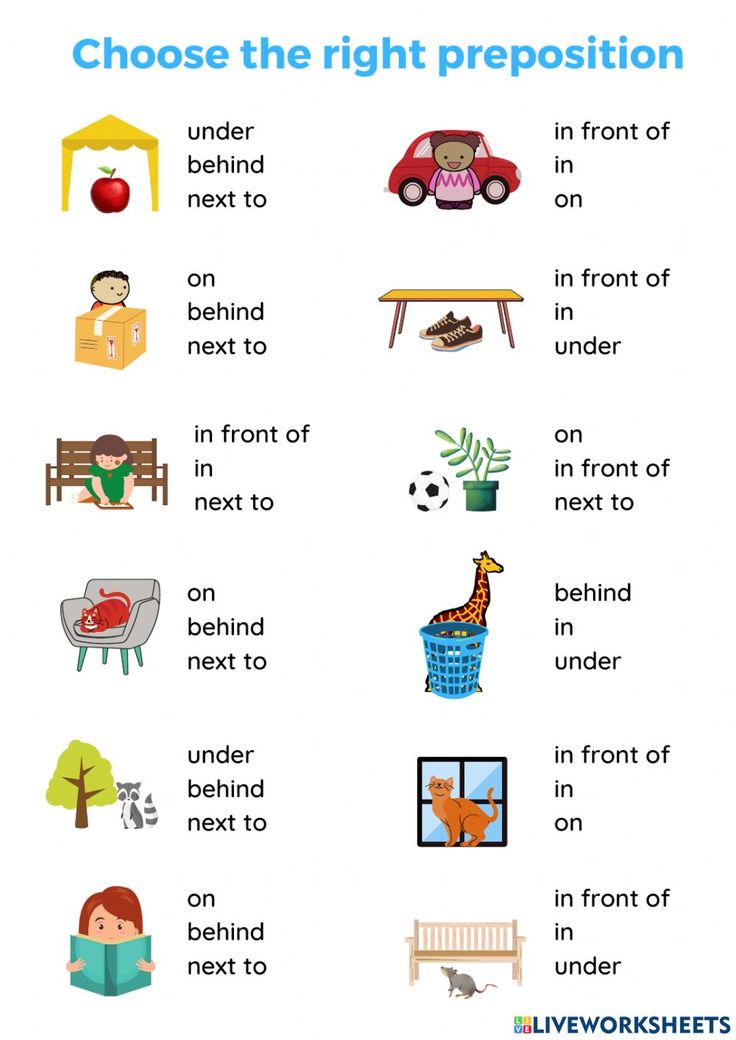
Children are asked to make sentences based on the picture. (Performed with a light ball)
Catch the ball and throw the ball,
make up an offer!
Children make sentences.
What bar do we represent the offer?
What strips shall we designate the words in the sentence? How many strips do you need to take?
Why is the high wand stripe in the first place?
What shall we put at the end of the sentence?
How many words are in the sentence?
Name the 1st word in the sentence (third, fourth).
Name the preposition word in the sentence. What is the 3rd word?
(Children take turns working at the table with diagrams)
Questioning all children - highlighting a preposition from a self-composed sentence.
5. Dynamic pause
I sit in the room and hear (sit down, hands near ears)
Rain drips on the roof (movement of hands over head from top to bottom)
And a kitten crawled under the table (sit down)
And fell asleep there like a kitten (fold hands under ear)
6.
 Selection of prepositions from poetic texts
Selection of prepositions from poetic texts In the field, in the house, on the pine tree,
Beyond the river, in the forest, in a dream,
Under the birch and in the den -
Have you noticed the prepositions?
7. Working with individual visual material
Speech therapist: “Sometimes little people like to play pranks, and then they can't find their things. Fairy loves order in everything. Help her, please. Collect the picture and tell where everything is. (Children collect split pictures)
Exercise. Compilation of sentences with a preposition based on two reference pictures. Self-compilation of a sentence scheme with the preposition in, on, under, behind.
Sample sentences:
- The kitten hid under the sofa.
- Dunno saw the typewriter under the chair.
- Dresses are hanging in the closet.
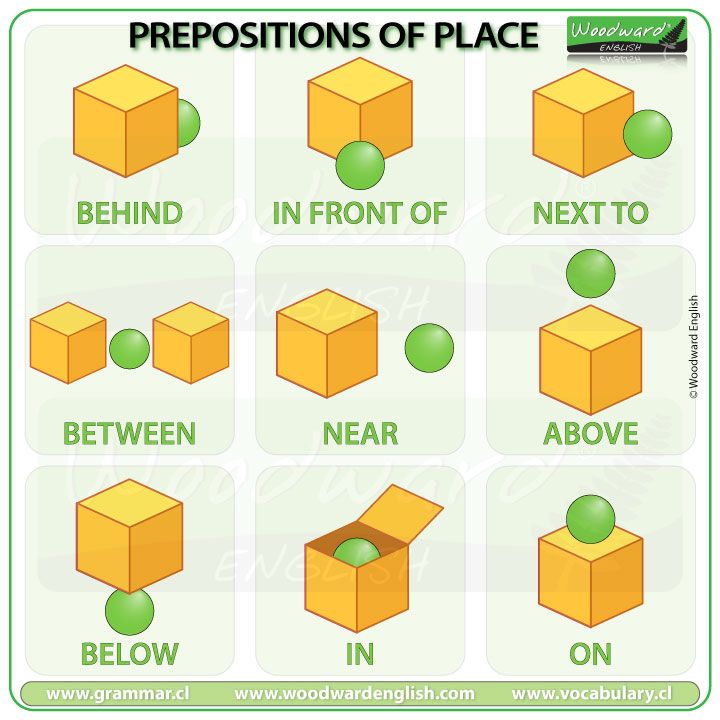
- Books are on the shelf.
- The boy hid behind a tree.
8. Summary of the lesson, assessment of children's activities
- This concludes our lesson. You all did a very good job!!!
Prepositions in the speech of children with ONR
Oskolkova L.A., teacher-speech therapist
0004
An important indicator of a child's literate speech is the ability to use prepositions correctly. Therefore, in the formation of the grammatical structure of children's speech, work on the study and consolidation of prepositions plays an important role.
A preposition in grammar is a function word that expresses the relationship between words (phrases and word form) .
Prepositions can be arranged into the following groups:
1. Prepositions (in, on, under, behind, around) - according to the location of objects or objects in space. nine0005
nine0005
2. Prepositions (by, from, around, to, to, from) - the direction of action of objects or objects.
3. Prepositions (by, between, with, in front of, in front of, behind) - the relative position of objects relative to each other.
4. Preposition (y) - the presence of any property of an object or object.
5. Prepositions (for, about, about) - the direction of action on an object or object.
6. Compound prepositions (because of, from under).
However, in children with general underdevelopment of speech, numerous agrammatisms are often observed (mistakes) when using prepositions. Therefore, purposeful, systematic work is needed to overcome these mistakes in children and , both on the part of teachers and parents.
First of all, it is important to help the child learn the semantic meaning of each preposition (the so-called "small word" , since only under this condition will he be able to use them correctly in his speech.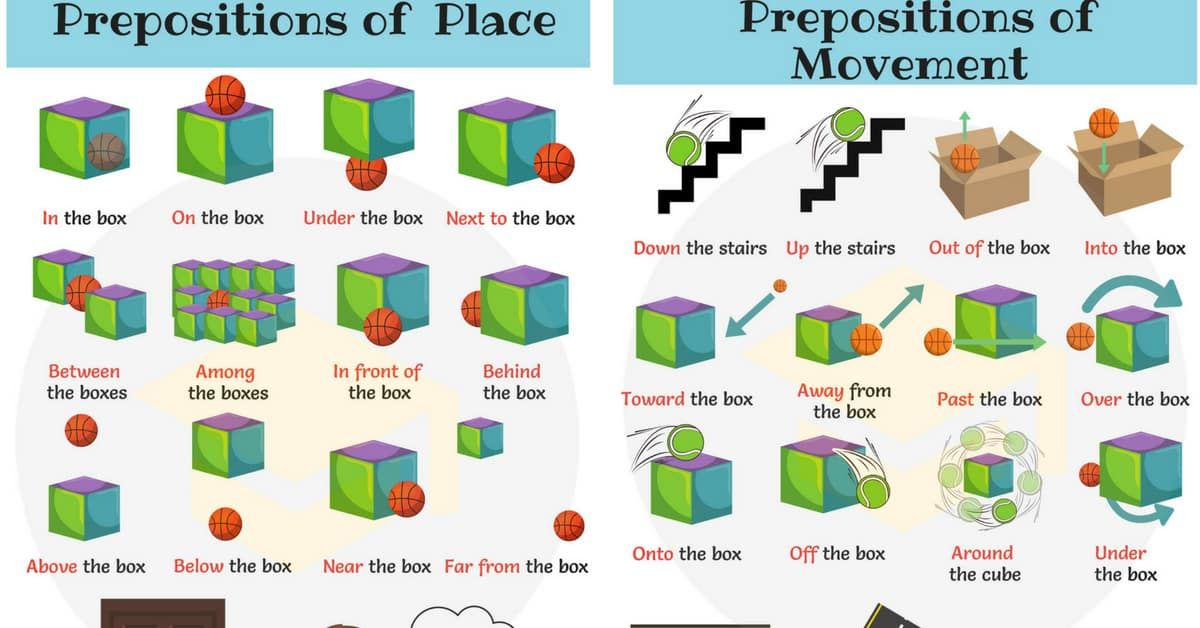
It is necessary to gradually explain to the child what prepositions mean:
ON - it means on the surface of something (on the table)
B - it means inside something (on the table)
UNDER - below something (under the table)
ABOVE - above something, as if in the air (above the table)
NEAR - next to something (with a table)
FOR - as if hidden behind something (behind the table)
FRONT - in front of something (in front of the table)
The meaning of each preposition is explained separately, and the explanation is necessarily accompanied by a visual and repeated demonstration on specific objects. For example, having explained to the child the meaning of the preposition ON , the adult says: “Look, I put the book ON the table, and now I put it ON the cabinet (performs the appropriate actions) .
The same is done with the preposition В (each action is "voiced" ).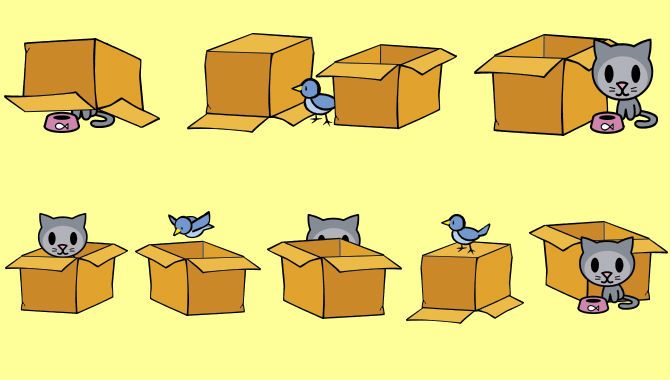 When explaining the meanings of prepositions, you can use visualization - diagrams. nine0005
When explaining the meanings of prepositions, you can use visualization - diagrams. nine0005
After explaining to the child the symbols available in the diagram, it can be used in exercises. The adult shows the child a picture and names what is shown on them, and the child must show the diagram that corresponds to the meaning of the preposition used by the adult. At the same time, the child sees that the location of the circle in relation to the square is fully consistent with the location of real objects. Examples of "voicing" pictures:
* A seagull flies over water. nine0005
* A squirrel sits in a hollow.
* A bird sits on a branch.
* The ball is under the book.
* Children play near the house.
To find out how the child has learned the meanings of prepositions, he is asked to silently follow the instructions: put the book on the table, in the bedside table, in the closet, on the windowsill, on the table, etc. The unmistakable execution of these instructions will indicate that the child has learned meanings of prepositions.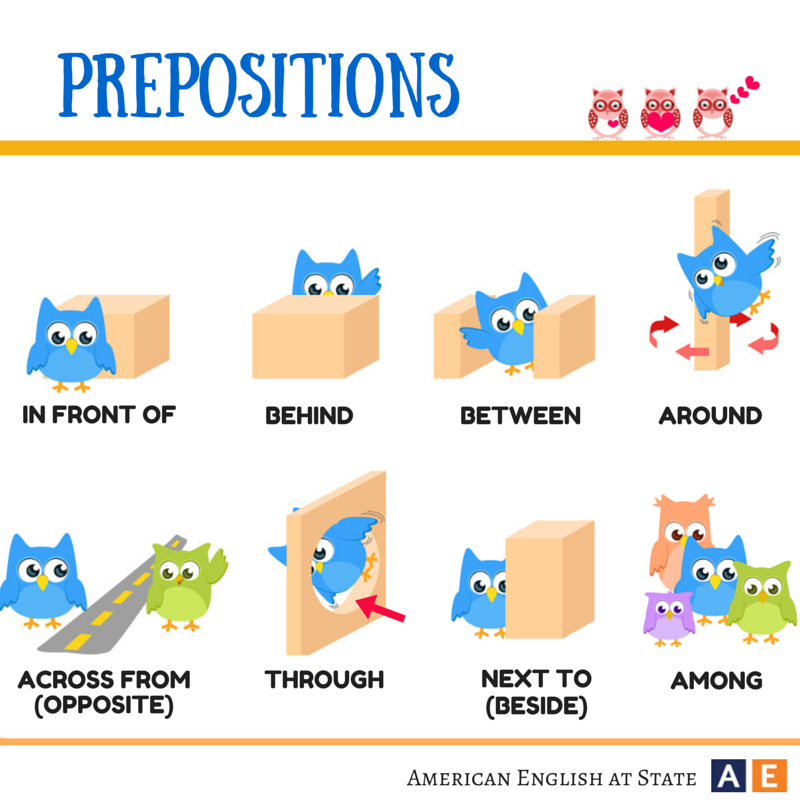 Only after that you can proceed to the exercises in the correct use of prepositions by the child himself. nine0005
Only after that you can proceed to the exercises in the correct use of prepositions by the child himself. nine0005
One of the areas of corrective work on the formation of lexical and grammatical categories in children with general speech underdevelopment is teaching the understanding and correct use of prepositions. The limitations of verbal communication, the lag in the development of cognitive activity do not allow children to master prepositional constructions on their own. It is necessary to help children learn the rules for changing and combining words, to teach them to accurately convey the semantic intention using language means.
Prepositions in the child's speech appear later than all significant parts of speech. A characteristic regularity of the normal development of children's speech is the fact that the assimilation of prepositions is carried out only after the most functional elements of the language - inflections (endings) are mastered.
In children with OHP, the same sequence in the assimilation of speech is observed as in normally developing peers, but in a more extended period. Therefore, speech therapy work on the formation of the correct use of prepositions in children with OHP is based on the sequence in the assimilation of prepositions in the norm. nine0005
Therefore, speech therapy work on the formation of the correct use of prepositions in children with OHP is based on the sequence in the assimilation of prepositions in the norm. nine0005
In speech therapy classes on the formation of the correct use of prepositions in speech in children, we learn to understand the spatial relationships of two objects, expressed by the prepositions on, in, at, under, about, etc. , the most common in everyday practice and the simplest in terms of meaning. Classes are held in subgroups, alternating with the teacher's classes in the form of didactic games, game exercises, entertaining tasks. To draw the attention of children to sounding speech, toys, fairy-tale characters, objects well known to children are used. It is necessary to teach children to listen carefully to the instructions, to correctly perform the required action. For example, the Adult puts the die on the table and says, "The die is on the table." Preposition to is voiced.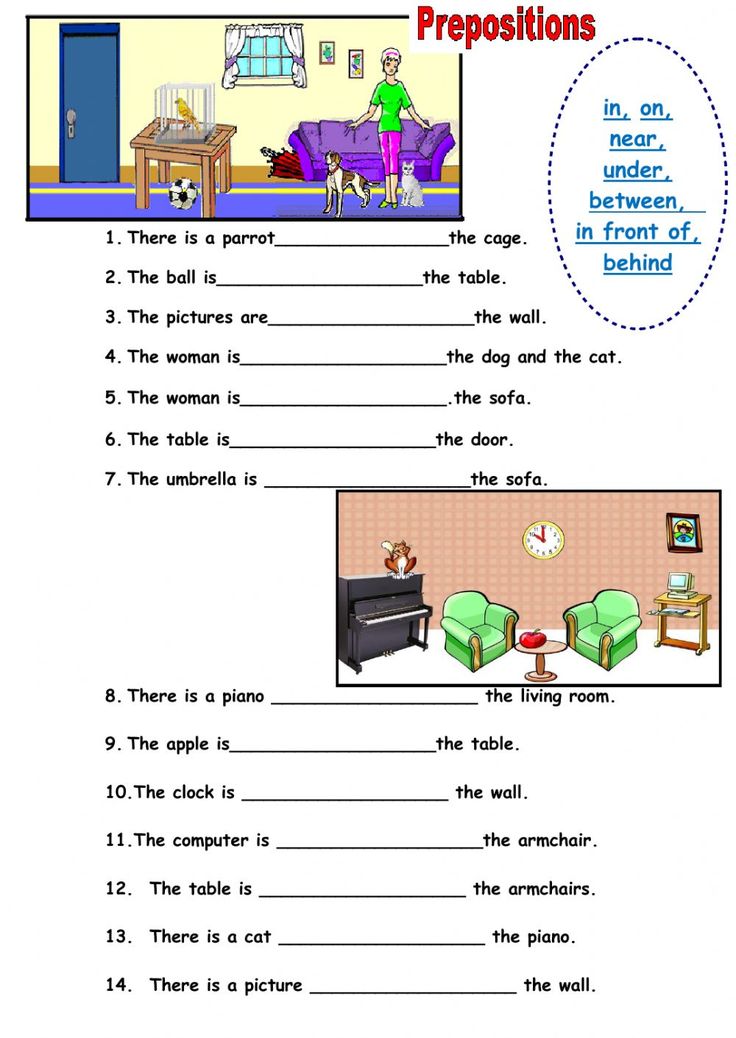 Children do the same. Then each child is asked where he put the cube. If the child cannot answer himself, then the speech therapist does this for him. First, children are taught to use a preposition in phrases, then in phrases, without achieving a clear pronunciation of words. After getting acquainted with several prepositions, work is carried out to differentiate them. For example, they ask the child to show where the pencil is in the box, and where is on the box; where the ball lies on under the chair, and where is under the chair.
Children do the same. Then each child is asked where he put the cube. If the child cannot answer himself, then the speech therapist does this for him. First, children are taught to use a preposition in phrases, then in phrases, without achieving a clear pronunciation of words. After getting acquainted with several prepositions, work is carried out to differentiate them. For example, they ask the child to show where the pencil is in the box, and where is on the box; where the ball lies on under the chair, and where is under the chair.
The skills of correct understanding and use of prepositions are fixed by educators in individual classes held in the afternoon, as well as in the process of all regime moments. Parents can also be of great help. During consultations, they can be recommended to play with their children at home in such games as “Who hid where?”, “What is on the tree, and what (who) is under the tree?”, “Cat's house” and others.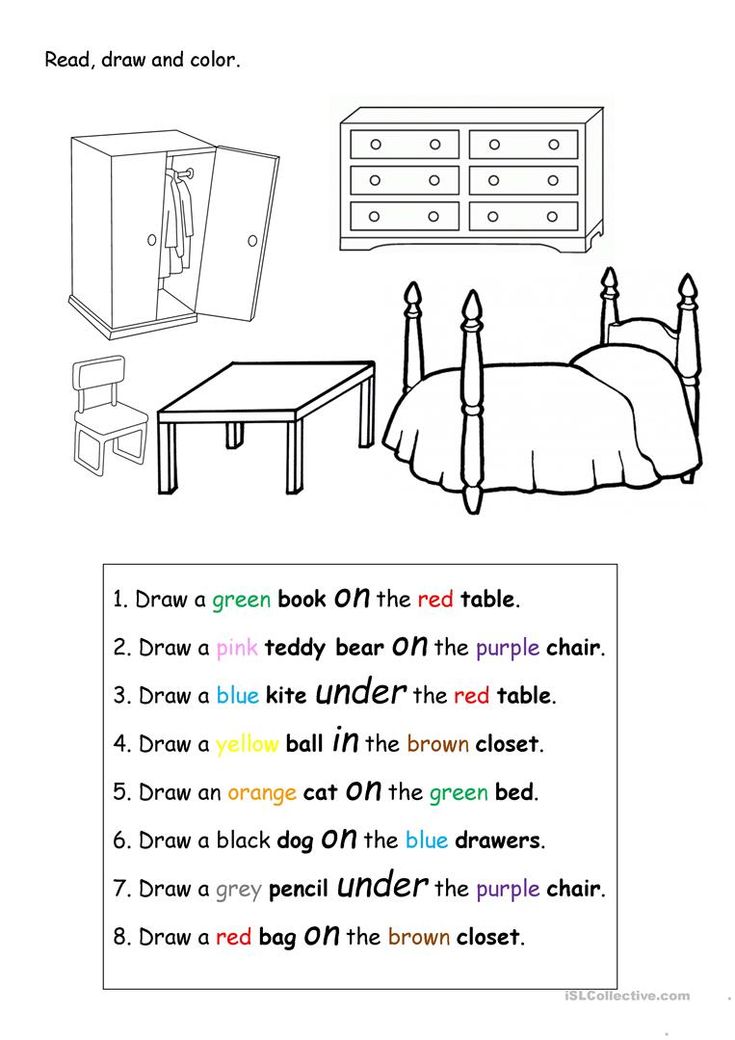
Children of senior preschool age (2-3 levels of speech underdevelopment) get acquainted with prepositions on the material of phrases and simple phrases. You need to start learning with the simplest prepositions on, under, indicating the scene and easily modeled in the process of visual demonstration. The children's understanding of the spatial arrangement of objects expressed by these prepositions is clarified. For example, clearly highlighting the preposition to with your voice, the speech therapist asks you to follow the following instructions:
- Put the cup on the table, and the car on the chair.
- Place book on table, ball on floor, and doll on bed. nine0005
When tasks with a small word to will be executed without errors, the rule can be explained:
Small word on, appears when the object is on top.
After explaining the rule, the adult, followed by the children, pronounce word combinations with the preposition to , highlighting the preposition with their voice.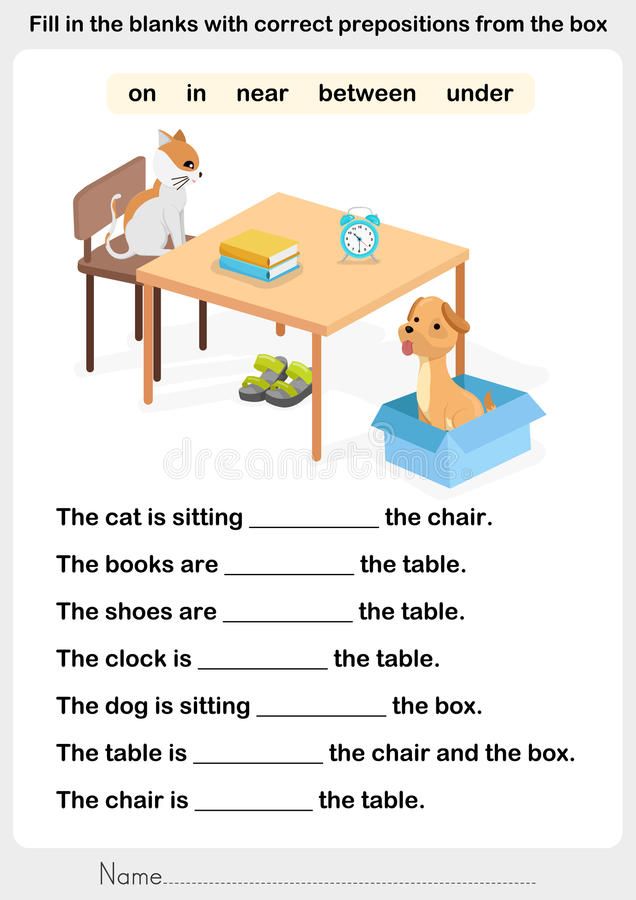 Then they make suggestions. In the classroom, not only objects in the group (toys, furniture, dishes) are used, but also picture material. Relying on the visual analyzer always gives a positive effect, therefore, in addition to plot and subject pictures, preposition schemes can be used. nine0005
Then they make suggestions. In the classroom, not only objects in the group (toys, furniture, dishes) are used, but also picture material. Relying on the visual analyzer always gives a positive effect, therefore, in addition to plot and subject pictures, preposition schemes can be used. nine0005
After mastering the preposition on, , the spatial arrangement of objects expressed by the preposition under is specified. Children learn to isolate the preposition under in a sentence and compose phrases and sentences with this preposition according to a visual situation, according to plot pictures, and two subject pictures. After mastering the grammatical constructions with the prepositions to and under , work is carried out to distinguish them. An adult gives children a "truncated task":
- Put the ball ... a chair, and the fungus ... a table, - and asks: - Is it clear how to perform the actions? I missed small but very important words.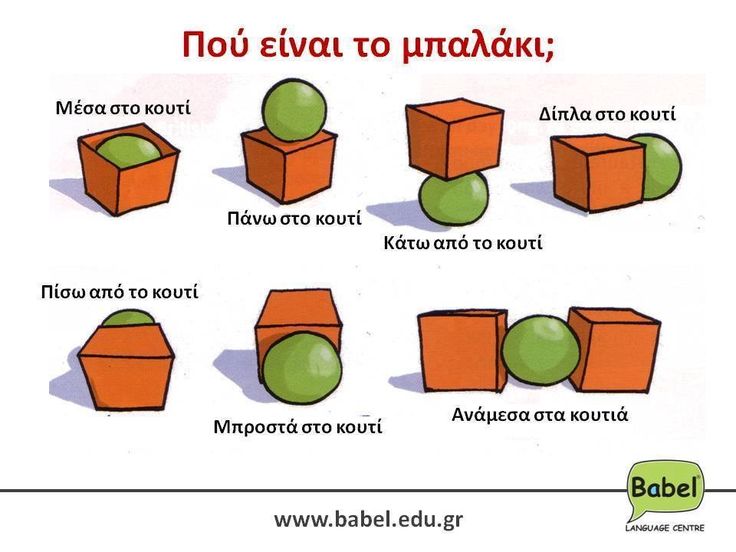 Now, listen again: Put the ball under the chair and the fungus on the table. Do you need to do the same or different steps? What is the difference?
Now, listen again: Put the ball under the chair and the fungus on the table. Do you need to do the same or different steps? What is the difference?
It is necessary to teach children to differentiate tasks, to listen to the verbal instruction, to keep its sequence in memory. Gradually, the tasks become more difficult: in the series of “small words”, it is necessary to highlight, for example, the words under and under . Hearing them in a row: on, from, in, under, about, between, over, the child should clap his hands.
You can offer children a task to understand the generalized meaning of the prepositions to and to : the book is on the table. Where else could the book be? The ball fell under table. Where else can he go? Children are taught to add missing prepositions to a sentence. When learning to use prepositions with different cases, children get acquainted with new meanings of prepositions.